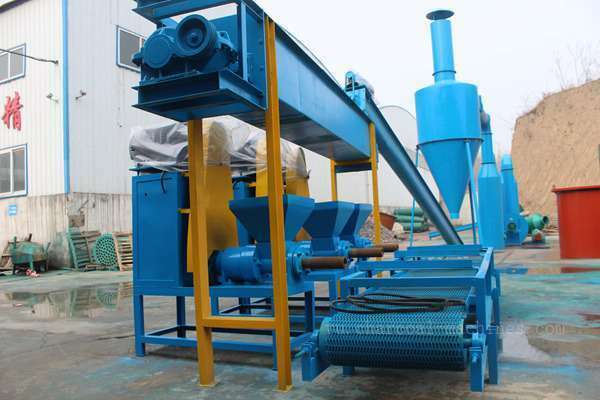Линия по производству высококачественных древесноугольных брикетов требует четырех стадий механической обработки угля от сырья до конечного продукта.
Сначала этап дробления
Не все деревянные бруски подходят для производства угля. Если деревянные бруски должны быть переработаны в уголь, их необходимо измельчить. Только измельченные деревянные бруски могут производить уголь хорошего качества. Обычно необходимо измельчить древесину на кусочки шириной около 3-5 мм.

Во-вторых, этап сушки.
Температура на этом этапе составляет 120-150 градусов Цельсия, и скорость пиролиза очень низкая. Основная причина заключается в том, что влага в древесине испаряется при использовании внешнего источника тепла, и химический состав древесного материала практически не изменяется.
В-третьих, этап производства прутьев.
На этом этапе мы можем делать уголь различных форм в соответствии с нашими собственными идеями. Этот этап очень важен. Потому что форма угля, которую вы делаете, может повлиять на качество угля. Температура, при которой изготавливается прут, обычно превышает 38 градусов Цельсия.
В-четвертых, этап карбонизации.
Начальная температура стадии составляет 150-275 градусов Цельсия, реакция пиролиза древесных материалов очевидна, и химический состав древесных материалов начинает изменяться. Нестабильные компоненты, такие как полуволокна, разлагаются с образованием углекислого газа, угарного газа и небольшого количества уксусной кислоты.
Температура контролируется на уровне около 275-400 градусов Цельсия. На этом этапе древесный материал резко термически разлагается, что приводит к образованию большого количества продуктов разложения. Полученный жидкий продукт содержит большое количество уксусной кислоты, алкоголя и масла гибискуса. Содержание воды в образующемся газе постепенно увеличивается. Сокращение, в то время как метан, постепенно уменьшается, и газ постепенно становится все больше и больше. Этот этап выделяет большое количество тепла реакции, поэтому его также называют стадией экзотермической реакции.
После этого температура поднимается до 450-500 градусов Цельсия. На этом этапе древесный уголь кальцинируется за счет внешнего тепла, летучие вещества, оставшиеся в древесном угле, удаляются, содержание фиксированного углерода в древесном угле увеличивается, а жидкий продукт образуется редко.
Наконец, он плавится при температуре 500-1200 градусов Цельсия. В конечном итоге становится высококачественным углем.
